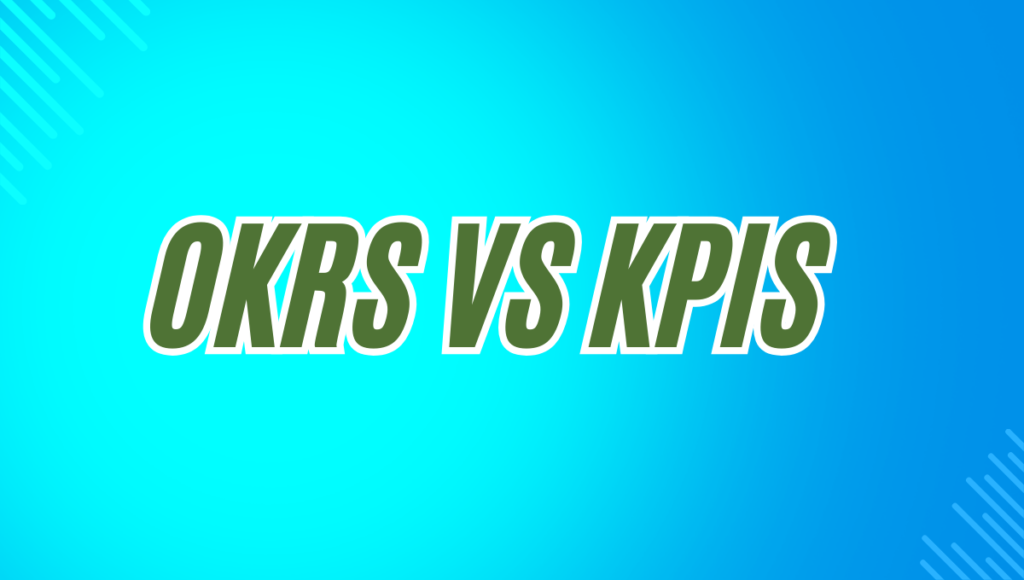In today’s data-driven business landscape, measuring success is more critical than ever. Two common methodologies for setting goals and tracking performance are OKRs (Objectives and Key Results) and KPIs (Key Performance Indicators). Though often used interchangeably, these approaches serve different purposes and provide unique value to organizations. This article explores the key differences, advantages, and ideal applications of OKRs vs KPIs. particularly in industries like healthcare business management consulting.
What Are OKRs?
OKRs, short for Objectives and Key Results, are a goal-setting framework pioneered by Andy Grove at Intel and popularized by companies like Google. OKRs consist of a primary objective and several key results that indicate whether the objective is being met. They focus on ambitious goals that encourage growth and innovation, driving teams to achieve challenging targets.
- Objective: A clear, motivating goal that a team or individual wants to achieve.
- Key Results: Specific, measurable outcomes that demonstrate progress toward the objective. These are quantifiable and typically include 3-5 key results per objective.

Example of an OKR:
- Objective: Increase customer satisfaction.
- Key Result 1: Improve Net Promoter Score (NPS) from 60 to 75.
- Key Result 2: Reduce average customer support response time to under 5 minutes.
- Key Result 3: Achieve a 95% customer satisfaction rating on support tickets.
Try Journey’s strategy execution platform for CEOs to streamline your healthcare management consulting services.
Try Journey’s Strategy execution platform for CEOs.
What Are KPIs?
Key Performance Indicators, or KPIs, are measurable values that demonstrate how effectively an organization is achieving its critical business objectives. KPIs are often used to track progress over time and provide clear benchmarks for success. KPIs are commonly used for both operational and strategic tracking, often at multiple levels within an organization (e.g., team, department, and company-wide metrics).
Examples of KPIs:
- Customer retention rate
- Sales growth percentage
- Monthly revenue or profit margin
- Number of new customers acquired
Key Differences Between OKRs and KPIs
While both OKRs and KPIs involve metrics, they differ in purpose, structure, and application.
- Purpose and Focus
- OKRs: Primarily used to drive strategic growth and transformation. They encourage ambitious goal-setting and innovation.
- KPIs: Typically used for monitoring and sustaining performance over time. They serve as a snapshot of current performance rather than a driver of future change.
- Time Horizon
- OKRs: Often set on a quarterly or annual basis, allowing companies to pursue specific goals within a defined period.
- KPIs: Usually tracked consistently, often monthly or quarterly, and provide a continuous view of the organization’s health.
- Approach to Goal-Setting
- OKRs: Focus on setting aspirational, sometimes even risky goals. The idea is to stretch beyond what’s currently achievable.
- KPIs: Tend to be more conservative, representing realistic and achievable benchmarks.
- Measurement and Evaluation
- OKRs: Each key result is tied directly to the objective. Progress is typically tracked on a scale (e.g., 0-1.0 or 0-100%) and reviewed at the end of each cycle.
- KPIs: Generally have a fixed target or threshold, such as maintaining a customer satisfaction score above 90%.
- Impact on Company Culture
- OKRs: Cultivate a growth-oriented, ambitious culture by pushing teams to aim higher and seek innovative solutions.
- KPIs: Help build a culture of accountability and performance tracking, focusing on stability and consistent performance.
When to Use OKRs vs. KPIs
The decision to use OKRs or KPIs depends largely on your organization’s goals and strategic priorities, especially in fields like healthcare management consulting.
- Use OKRs when:
- You need to drive substantial change, innovation, or strategic growth.
- The organization has ambitious, long-term goals that require concerted effort.
- You want to motivate teams to challenge themselves and go beyond their comfort zones.
- Use KPIs when:
- Monitoring and optimizing core business operations is essential.
- Consistent performance is critical to sustaining the organization’s success.
- You need a quick, reliable snapshot of performance to evaluate operational efficiency.
Examples of How OKRs and KPIs Work Together
In practice, OKRs and KPIs can complement each other. For instance, an organization might set an ambitious OKR to “improve customer engagement” with key results aimed at boosting user retention and satisfaction. Meanwhile, KPIs such as daily active users or customer satisfaction scores can provide real-time feedback on ongoing performance, helping teams adjust their OKRs as needed.
Example Scenario:
- OKR: Increase website traffic by 50% within the next quarter.
- Key Results:
- Publish 10 new blog posts with high search volume keywords.
- Increase social media shares of blog content by 30%.
- Key Results:
- Related KPIs: Monthly website visitors, time spent on site, bounce rate
Pros and Cons of OKRs and KPIs
| Metric | OKRs | KPIs |
| Pros | Inspire innovation and drive growth | Provide a reliable measure of performance |
| Encourage cross-functional collaboration | Enable consistent tracking and monitoring | |
| Cons | Can be challenging to achieve consistently | May limit creativity if too rigidly defined |
| Require a mindset shift and dedicated adoption | Often lack alignment with long-term goals |
Implementing OKRs and KPIs Effectively
- Define Clear Objectives and Key Results or Indicators: Ensure each OKR and KPI has a clear, measurable goal.
- Align OKRs and KPIs Across Teams: Effective goal alignment ensures each team understands its contribution to the larger mission.
- Regularly Review and Adjust: Check progress toward OKRs at least quarterly, and monitor KPIs monthly or weekly to ensure ongoing alignment.
- Encourage Transparency and Collaboration: Publicly accessible OKRs and KPIs can enhance accountability and motivate teams to work toward shared objectives.
OKRs and KPIs serve as complementary tools in an organization’s strategy and performance management toolkit. While OKRs focus on ambitious, growth-oriented objectives, KPIs offer a consistent measure of operational performance. By incorporating AI tools for business, organizations can streamline both frameworks, enabling greater agility, precision, and success in their strategic initiatives.